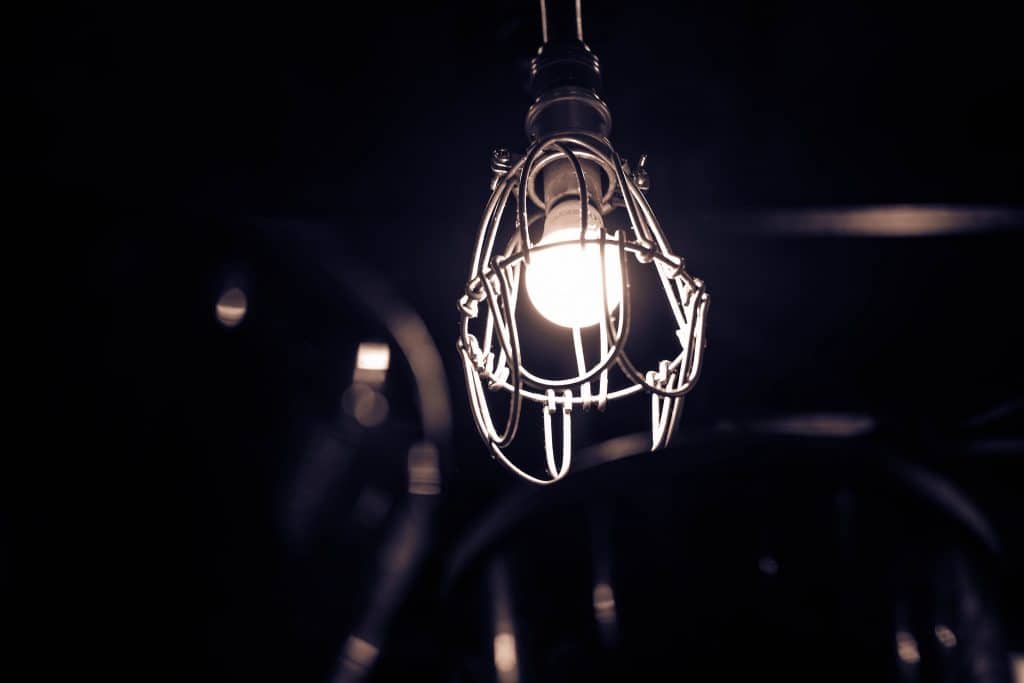
- Light is made up of energy.
- Light travels in a straight line. Objects in its path cause light to bend or refract.
- The speed of light is exactly 299 792 km per second.
- This is the speed when light is travelling in a vacuum and not obstructed by the atmosphere.
- Travelling at the speed of light, you could go around Earth 7.5 times in a second.
- There are different types of light and each one has its own wavelength.
- Some animals can see wavelengths that humans cannot. Ultraviolet light (UV light), for example.
- Sunlight can be seen 80 meters underwater.
- Plants are green because they reflect green light while absorbing other colours. The other colours that they absorb are used in photosynthesis to create food.
- A double rainbow occurs when light is reflected twice within each water droplet.
- LED lights are made up entirely of visible (to humans) light. This is why they appear that much brighter.
- Light from the sun takes over 8 minutes to reach earth.
- The speed of light is relevant to the atmosphere that it is travelling through.
- Plato thought that we see by shooting light rays out of our eyes.
- LED lights produce much less heat than iridescent lights.
- Visible light makes up very little of the electromagnetic spectrum. On the spectrum, you will find everything from infrared to gamma rays.
- Birds and lizards can see ultraviolet light. On the other hand, goldfish can see infrared light.
- Light has no mass but it manages to have momentum. Scientists are working on harnessing the energy provided by this momentum of light.
- “Photography” translates to mean “writing with light”.
- The aforementioned term was coined by the son of the man who discovered infrared.
The Right To Light
There is an English law called the ‘Right to Light’. The law dictates that if someone has received natural light in their building for more than 20 years, they are allowed to forbid the construction of buildings that would block this stream of light.
The Light That Never Went Out

A neon lamp was switched on during the Great Depression and continued to burn until it was discovered some 77 years later. The electricity bill came up to a whopping $17 000!
In A Jiffy
When you say you will be somewhere in a ‘jiffy’, you are referring to an existing unit of measurement. A ‘jiffy’ is the time it takes light to travel one centimeter in a vacuum.
This works out to approximately 33.3564 picoseconds. Additionally, if you were wondering, a picosecond is one-trillionth of a second.
Worse Than The Angler Fish

You might already be familiar with the Angler Fish that hypnotises its prey with a bioluminescent light before devouring it.
However, there is also the less popular Stoplight Loosejaw, who takes advantage of its prey’s disability to see red light. It projects a beam of red bioluminescence to hunt with ease. Talk about an unfair advantage!
Divided By Light
From space, you can see quite clearly the division between East and West Germany. This is since the different regions use different types of lightbulbs. Hence, the type of light produced is noticeably different.
Bless You!
If you find yourself with a tickle in your nose when faced with bright light, you’re experiencing what a significant percentage of people experience. The mildly annoying phenomenon is known as ‘photic sneeze reflex’. It occurs due to crossed wires in the brain, according to neurologists.
Blue Light Calms You Down
In countries such as Japan and Scotland, the streetlights switch to blue at night. This has resulted in lowered cases of crime and suicide. Proof to the theory that blue light has a calming effect on human beings.
Can Humans See Ultraviolet Light?
The reason human beings cannot detect ultraviolet light is that it is filtered out by your eye’s lens. You can undergo surgery to have this lens removed, should you desperately want to be able to see ultraviolet light rays.
Bioluminescent Trees
Scientist and developers are working on extracting the bioluminescence that occurs naturally in certain jellyfish and fireflies. If they are successful, we could soon have bioluminescent trees that will not require energy.
It Spells Hollywood
The blinking light atop the famed Capitol Records Tower spells out ‘Hollywood’ in morse code. Rather appropriate if you ask us!
A Supersonic Blue Glow
There is a blue glow that is emitted when something travels faster than the speed of light in any given medium. This is likened to the supersonic boom that occurs when things travel at the speed of sound. It is called Cherenkov Radiation.
A Cursed Diamond

There is a diamond called the Hope Diamond that emits an ominous red glow when exposed to UV light. We can’t blame people for therefore believing that the diamond is cursed.
Human Beings Glow
We as humans are bioluminescent, not unlike the jellyfish and fireflies. However, the light we emit is much too weak for our eyes to detect it.
Conductors In Light
There is an element known as Selenium that only conducts electricity when light is shined on it. As one might expect, in the dark, Selenium acts as an insulator.
Flashes In Space

If you happen to find yourself out in space you might notice flashes of light that you wouldn’t here on Earth. This is due to optic rays hitting your optic nerves. The reason we do not experience this on Earth is thanks to the magnetosphere that blocks out these rays.
In Conclusion...
How many of these mind-blowing facts about light did you already know? Do let us know which one you found the most interesting and if we’ve left out any particularly eye-catching facts about light in the comments below!
Was this page helpful?
Our commitment to delivering trustworthy and engaging content is at the heart of what we do. Each fact on our site is contributed by real users like you, bringing a wealth of diverse insights and information. To ensure the highest standards of accuracy and reliability, our dedicated editors meticulously review each submission. This process guarantees that the facts we share are not only fascinating but also credible. Trust in our commitment to quality and authenticity as you explore and learn with us.
